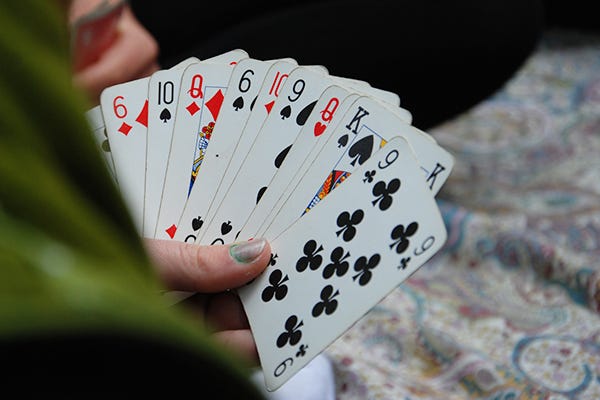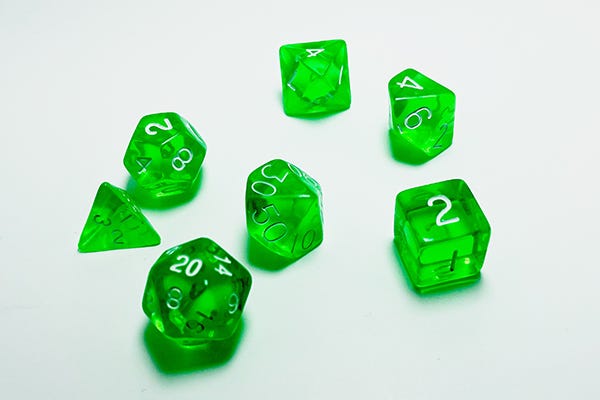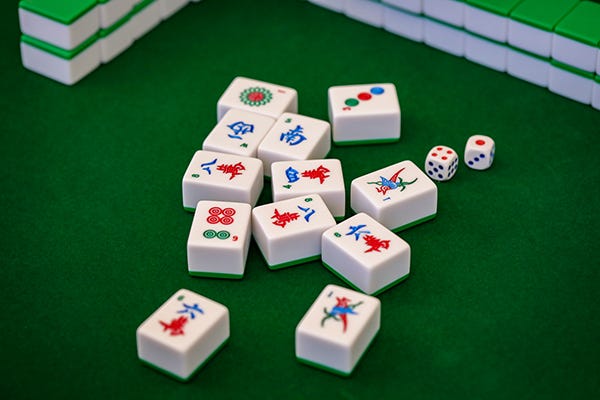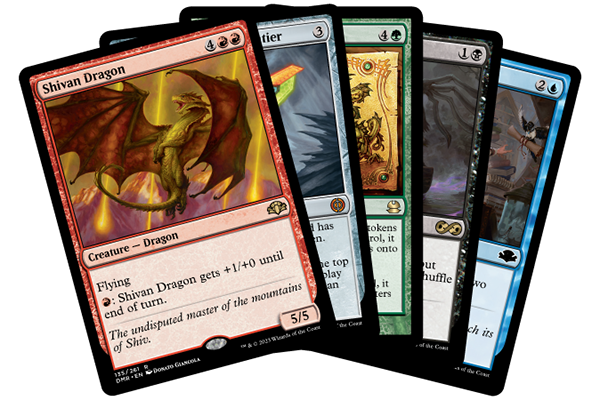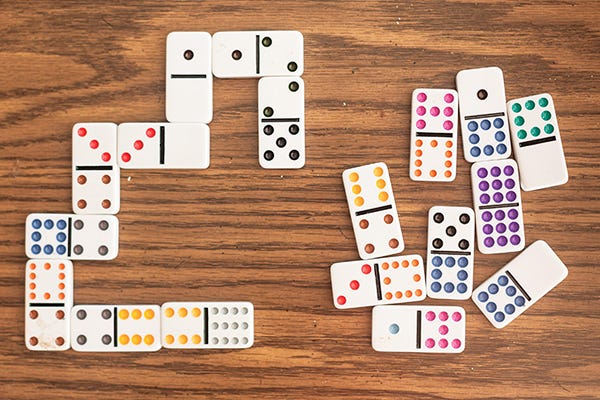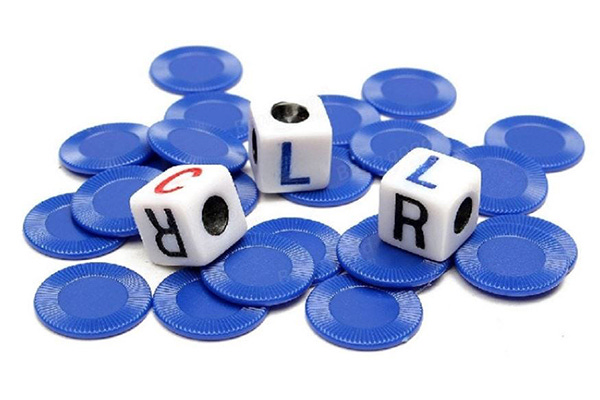Tabletop Treasures: The Significant Impact of Cards, Dice and Tiles
The best tabletop games that have stood the test of time!
Whether you’re into friendly family game nights or high stakes card games at any casino 🎰, tabletop gaming has been around for centuries. While board games are classified as games that come with a player board and play pieces all in one box, other tabletop games don’t require a board. They are played at a table, and players use dice 🎲, tiles, cards, or pencil and paper 📝 to play. We’ve rounded up some of the most popular tabletop games that players have built entire fandoms around!
1. Card games
Card games ♣️♥️♠️♦️ are probably the oldest forms of gaming there are. It’s assumed that the first playing cards were invented in the 9th century AD during the Tang Dynasty, the product of new printing technology of the time. Playing cards as we know them today date back to around the 14th century. The earliest full set of ordinary playing cards as we know them today is from the 15th Century and on display at The Cloisters in NYC. There are thousands–yes, thousands–of games one can play with an ordinary deck of cards. But of course the most popular ones are Poker, Blackjack, Solitaire, Old Maid, Bridge, and more. There is an International Playing-Card Society, founded in 1972, dedicated to the collecting of playing cards and card games, and their website provides interesting history and discussion forums. We love a fandom community!
2. Dungeons & Dragons
Dungeons & Dragons, or D&D, first published in 1974, is credited as the very first Role Playing Game, or RPG, and is often referenced in pop culture through TV and movies. Each player adopts a character and plays through an adventure in a fantasy 🐉 setting–and it’s all led by a designated Dungeon Master, or DM. Because there are numerous realms to choose from, and so many variables based on the players’ choices, the options are literally endless ∞. Players often play with a group for years, and sometimes participate in many different games, or campaigns, simultaneously. The aim of the game is not to “win” necessarily, but the focus is actually on storytelling and bonding with other players. And a set of special dice helps the story along. The game is so ubiquitous that several digital and physical adaptations are available.
3. Mahjong (or Mah Jongg)
Mahjong or Mah-Jongg is a Chinese tile-based game that originated in the Qing dynasty in 19th century China. While traditionally played throughout East and Southeast Asia, it has been adapted and become popular in Western countries. It has a fascinating history, including that it began as a male-dominated gambling game before becoming strongly associated with femininity. It was popularized in the United States in the 1920s, amidst a prevailing national sentiment that was racist against Chinese people but not aspects of Chinese culture. It became further popularized by Jewish women in the United States in the 1930s, especially in the Catskills (which is referenced in the Catskills episodes of The Marvelous Mrs. Maisel). The game is played by four players, and uses a set of 144 tiles that depict various Chinese characters and symbols. The objective of the game is to build a complete set of matching tiles, called a “Mahjong,” usually consisting of four sets of three tiles and a pair. The game requires both strategic thinking and luck to be the first player to declare a “Mahjong.”
3. Magic: The Gathering
Magic: The Gathering, known to fans simply as Magic or MTG, was first released in 1993, created by mathematician Richard Garfield. It was the first trading card game, where players can build their own deck using a vast array of magical spells 🧙♂️, creatures, and artifacts represented by unique cards with distinct abilities and attributes. Players can purchase expansion and booster packs of cards to build their decks. Everyone typically starts with twenty life points, and the objective of the game is to outsmart and defeat your opponents by reducing their life points to zero using clever card combinations, tactical decisions, and strategic gameplay. The cards are ever-expanding, so the possibilities are literally endless and the game caters to all skill levels. Since the cards are collectibles, there is a huge trading and buying/selling market amongst fans. And as of 2022, Magic: The Gathering is a billion dollar brand.
4. Yahtzee
Originally released in 1956, Yahtzee is a dice game created by game entrepreneur Edwin S. Lowe. It is a development from earlier 5-dice games such as Poker Dice, Yacht, Kniffel, Cheerio, and Generala. Players must score points by rolling five dice 🎲 to make particular combinations. A single game contains thirteen rounds, and each player can roll up to three times in a turn to try to score a combination. After each round, the player strategically chooses which scoring category will be used in that round, and once a category is used it cannot be used again. It’s a “Yahtzee” if the roll of all five dice are the same. The game is suitable for all players, as it has a simple concept that combines luck and strategy with elements of chance and decision-making in order to score the maximum number of points.
5. Dominoes
Much like playing cards, a set of dominoes 🁻 🂅 are tiles that can be used to play a variety of different games with a single traditional 28-piece deck. Another ancient game, the earliest mention of dominoes can be traced to the Song dynasty in China in the 13th century. Modern dominoes as we know them now appeared in the 18th century in Italy, but they are very different from the Chinese. Most dominoes games are blocking games, which involve matching pairs of numbered tiles to create a chain. A single domino tile has two ends marked with dots, or pips, representing a number. Players draw a number of tiles and take turns placing them on the table, connecting matching ends. A player wins when they empty their hand. Because it’s a simple game of strategy and luck, it’s perfect for all skill levels.
6. Left Center Right
Left Center Right (LCR) is a simple and fast-paced dice game designed for multiple players, created in the early 1980s. Each player starts with a set number of chips, and they take turns rolling special six-sided dice labeled with “L,” “C,” “R,” and dots. Based on the outcome of their dice rolls, the players must then pass their chips to the players to their left or right, or the center. If a player runs out of chips, they are not eliminated but remain in the game. The last player holding chips is declared the winner. LCR is known for its quick rounds and easy-to-learn rules, which makes it a popular choice for social gatherings and family game nights for players of all ages. The game is fast-based and based on luck, which makes it lively and entertaining.
8. Rummikub
Rummikub was invented by Ephraim Hertzano from Romania, who developed the game after World War II. Originally sold door-to-door and on consignment in Israel, it was brought to the United States in the 1970s and the rules were translated from Hebrew to English. It was the best selling game in the country by 1977. The game itself is similar to card games like Machiavelli and Vatikan, which are played with two decks of cards. It is a tile-based game for 2-4 players that combines elements of both Rummy and Mahjong, with 106 tiles including numbered tiles in four different colors and two jokers. Each player must aim to play all of their tiles, similar to dominoes, and players aim to create sets and runs by laying down tiles in various combinations. It’s a great game for adults and children, as it requires pattern recognition as well as strategic thinking. Because it’s so versatile, it’s widely popular with both families and in competitive settings.
Want more? Head over to our Discord where you’ll find tons of other fans there chatting about the TV shows, movies, music and books we all love! We have forums for TV shows, movies, books and games! You can find our watch party schedule on our app! Don’t forget to follow us on Instagram, tumblr, and Spotify for more fandom content—and hit that subscribe button so you never miss a thing at rmrk*st!




